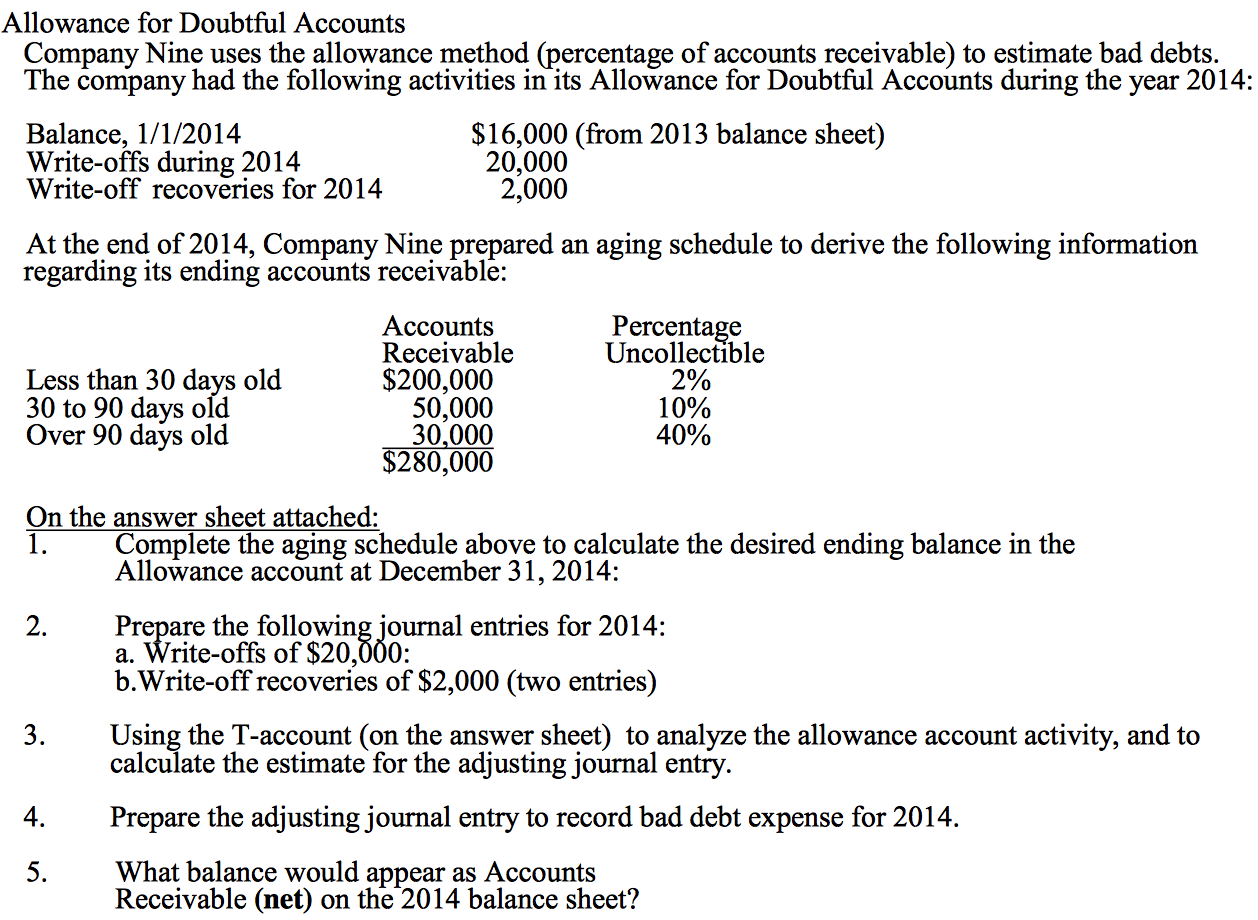Uncategorized
Estimating Bad Debts Financial Accounting

Adjusting entries may be necessary at the end of each accounting period to reflect changes in the estimated uncollectible accounts. These adjustments ensure that the allowance for doubtful accounts accurately reflects the current estimate of uncollectibles. The Percentage of Sales Method estimates bad debt expense as a percentage of total credit sales for a given period. This approach is based on historical data and trends, assuming that a consistent proportion of sales will become uncollectible over time.
Difference between Estimates and Actual Experience
- Estimates are inherent in accounting because the accountant attempts to match revenues and expenses.
- In applying the percentage-of-sales method, companies annually review the percentage of uncollectible accounts that resulted from the previous year’s sales.
- GAAP encompasses a broad range of principles and procedures, governing how financial statements are prepared and presented.
- There is one more point about the use of the contra account, Allowance for Doubtful Accounts.
- On the other hand, the allowance method accrues an estimate that gets continually revised.
At the end of February, ABC reviews the allowance for doubtful accounts and determines that the estimate of uncollectible accounts was accurate. This allows companies to account for the possibility of bad debts and maintain accurate financial statements. For example, if accounts receivable that are days past due historically have a bad debt rate of 5%, the company may estimate that 5% of the current day past due accounts will also be uncollectible. For example, if a company has historically had bad debts of 3% of credit sales, it may estimate that 3% of current credit sales will also be uncollectible.

Generally Accepted Accounting Principles
The first entry reverses the bad debt write-off by increasing Accounts Receivable (debit) and decreasing Bad Debt Expense (credit) for the amount recovered. The second entry records the payment in full with Cash increasing (debit) and Accounts Receivable decreasing (credit) for the amount received of $15,000. In addition to bad debts, there are several other reasons why a company may fail to collect the face amount of its receivables.
How to record a bad debt expense
Most accountants take the position that the expense is incurred in order to increase sales and, therefore, should be reported in the same time period as those sales if cause and effect are to be related. Most accounting theorists have endorsed the position that the loss arising from bad debt is an expense. There is one more point about the use of the contra account,Allowance for Doubtful Accounts. In this example, the $85,200 totalis the net realizable value, or the amount of accounts anticipatedto be collected. However, the company is owed $90,000 and willstill try to collect the entire $90,000 and not just the$85,200.
However, the allowance account already held a $3,000 debit balance ($7,000 Year One estimation less $10,000 accounts written off). As can be seen in the T-accounts, the $32,000 recorded expense results in only a $29,000 balance for the allowance for doubtful accounts. By establishing two T-accounts, a company such as Dell can manage a total of $4.843 billion in accounts receivables while setting up a separate allowance balance of $112 million. Bad debt expense is a natural part of any business that extends credit to its customers. Because a small portion of customers will likely end up not being able to pay their bills, a portion of sales or accounts receivable must be ear-marked as bad debt.
For example, a customer takes out a $15,000 car loan on August1, 2018 and is expected to pay the amount in full before December1, 2018. For the sake of this example, assume that there was nointerest charged to the buyer because of the short-term nature orlife of the loan. When the account defaults for nonpayment onDecember 1, the company would record the following journal entry torecognize bad debt. An aging of accounts receivable stratifies receivables according to how long they have been outstanding. These percentages vary by company, but the older the account, the more likely it is to represent a bad account. The bad debt expense is then the difference between the calculated allowance for doubtful accounts at the end of the account period and the current allowance for doubtful accounts before adjustment.
The adjustment will then increase this balance to reflect management’s new estimate of the uncollectible accounts. 1Some companies include both accounts on the balance sheet to explain the origin of the reported balance. Others show only the single net figure with additional information provided in the notes to the financial statements. In addition, it’s important to note the change in the allowance from one year to the next. Because the allowance went relatively unchanged at $1.1 billion in both 2020 and 2021, the entry to bad debt expense would not have been material. However, the jump from $718 million in 2019 to $1.1 billion in 2022 would have resulted in a roughly $400 million bad debt expense to reconcile the allowance to its new estimate.
You currently use the income statement method toestimate bad debt at 4.5% of credit sales. You are consideringswitching to the balance sheet aging of receivables method. Thiswould split accounts receivable into three past- due categories andassign a percentage to each group. Bad debt expense is casualty and theft losses definition reported within the selling, general, and administrative expense section of the income statement. However, the entries to record this bad debt expense may be spread throughout a set of financial statements. The allowance for doubtful accounts resides on the balance sheet as a contra asset.



